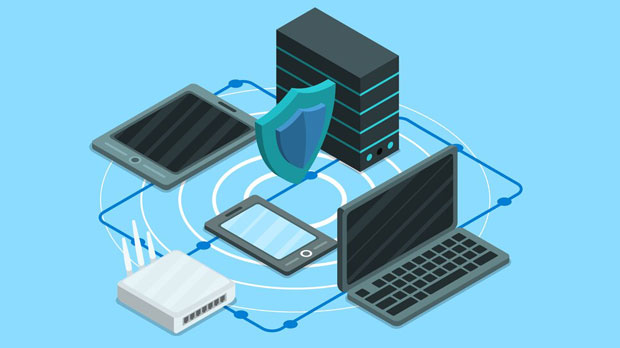When comparing proxy services, one of the critical factors to consider is the geographical reach of the IP addresses they provide. The ability to access a wide variety of geographical locations is essential for users who require proxies for tasks like web scraping, content localization, and market research. In this article, we will delve into the comparison between two prominent proxy providers, PYPROXY and Proxyium, to determine which of them offers more extensive geographical IP support. We will explore their coverage, performance, and how these factors contribute to the overall effectiveness of their services. Understanding Proxy Services and Geographical IP CoverageBefore diving into the specifics of each service, it’s essential to understand the concept of geographical IP coverage and why it matters. Proxy services act as intermediaries between the user and the internet, allowing users to hide their real IP addresses and appear to be located in different geographical regions. This is valuable for a range of online activities, including bypassing geo-restrictions, conducting research on localized content, and scraping data from websites that restrict access based on geographical location.Geographical IP coverage refers to the range of countries or regions a proxy service can provide IP addresses from. The broader the geographical coverage, the more flexibility users have in accessing global content and conducting tasks without being limited by location-based restrictions.PyProxy’s Geographical IP CoveragePyProxy, known for its wide variety of proxy solutions, offers a decent spread of IP addresses across multiple locations. The service provides users with proxies from numerous countries around the world, which can be crucial for businesses or individuals who need to access content or perform actions restricted by location.PyProxy supports several major global markets, with a significant presence in North America, Europe, and parts of Asia. It also offers IP addresses from various emerging markets in Africa and Latin America, making it a good choice for users seeking a diverse geographical range. However, the depth of support in certain regions, like Oceania or some parts of Southeast Asia, might not be as extensive as in others, which can be a limitation depending on the user's needs.In terms of specific countries, PyProxy provides proxies from popular locations like the United States, the United Kingdom, Germany, Canada, and France. While this coverage is substantial, it may fall short for users who need access to more niche locations or smaller markets.Proxyium’s Geographical IP CoverageProxyium, on the other hand, aims to provide an extensive range of proxy ips, particularly focusing on high-demand regions and emerging markets. One of the key selling points of Proxyium is its ability to offer proxies from over 100 countries, including less commonly covered regions. This makes Proxyium a strong contender for users who require diverse IP coverage in both developed and developing markets.One of the standout features of Proxyium is its emphasis on providing a global network that includes locations in remote areas and emerging economies, such as parts of Africa, the Middle East, and Eastern Europe. Proxyium has a particular edge in its support for countries like Brazil, India, South Africa, and countries in the Middle East, which can be harder to access with some other proxy services.Furthermore, Proxyium provides excellent coverage in regions like Asia-Pacific, where users can benefit from a range of IP addresses from countries like India, Japan, Australia, and South Korea. The inclusion of countries like China and Russia also enhances its global reach.Comparing the Geographical Reach of PyProxy and ProxyiumWhen comparing PyProxy and Proxyium in terms of geographical IP support, it becomes clear that both services cater to a broad range of locations. However, Proxyium stands out for its more extensive and diverse geographical coverage. While PyProxy covers several major markets effectively, Proxyium offers a more globalized network, especially in emerging and harder-to-reach markets.For users focused on specific regions like Latin America or Southeast Asia, Proxyium may offer better value. Its coverage extends into regions that are sometimes underserved by other proxy providers. In contrast, PyProxy, while solid in major regions, may lack some depth in less popular markets.Performance and Reliability Across Geographical LocationsGeographical IP coverage is essential, but performance is another critical factor. A proxy service that provides extensive geographical coverage but lacks reliability in terms of speed or uptime may not be useful. Both PyProxy and Proxyium have designed their networks with reliability in mind, but there are differences to note.PyProxy’s network is robust in core regions, particularly in the United States and Europe. Its performance is generally stable in these areas, but in emerging markets, users may experience slower speeds or occasional downtime, especially when accessing less common regions. This is due to the lower density of servers in some locations, which can lead to congestion during peak usage times.Proxyium, on the other hand, has optimized its network for high performance across a wider range of countries. Its infrastructure is designed to handle a large volume of traffic, ensuring faster speeds and higher uptime across multiple geographical locations. This makes Proxyium an excellent choice for users who require consistent and reliable performance regardless of location.Conclusion: Which Proxy Provider Offers Better Global Coverage?In the battle of geographical IP coverage between PyProxy and Proxyium, the latter emerges as the winner in terms of breadth and diversity of locations. While PyProxy offers solid coverage in popular regions like North America and Europe, Proxyium goes above and beyond, providing access to a wider variety of countries and regions, including many emerging markets that are often underserved.For users seeking more extensive geographical IP options, especially those needing access to remote or niche regions, Proxyium is likely the better choice. However, for those who primarily require access to major markets and have less concern about less-popular regions, PyProxy may still be an adequate option. Ultimately, the right choice depends on the user's specific needs and the geographical locations they need to access regularly.
Apr 02, 2025
![arrow]()


























































